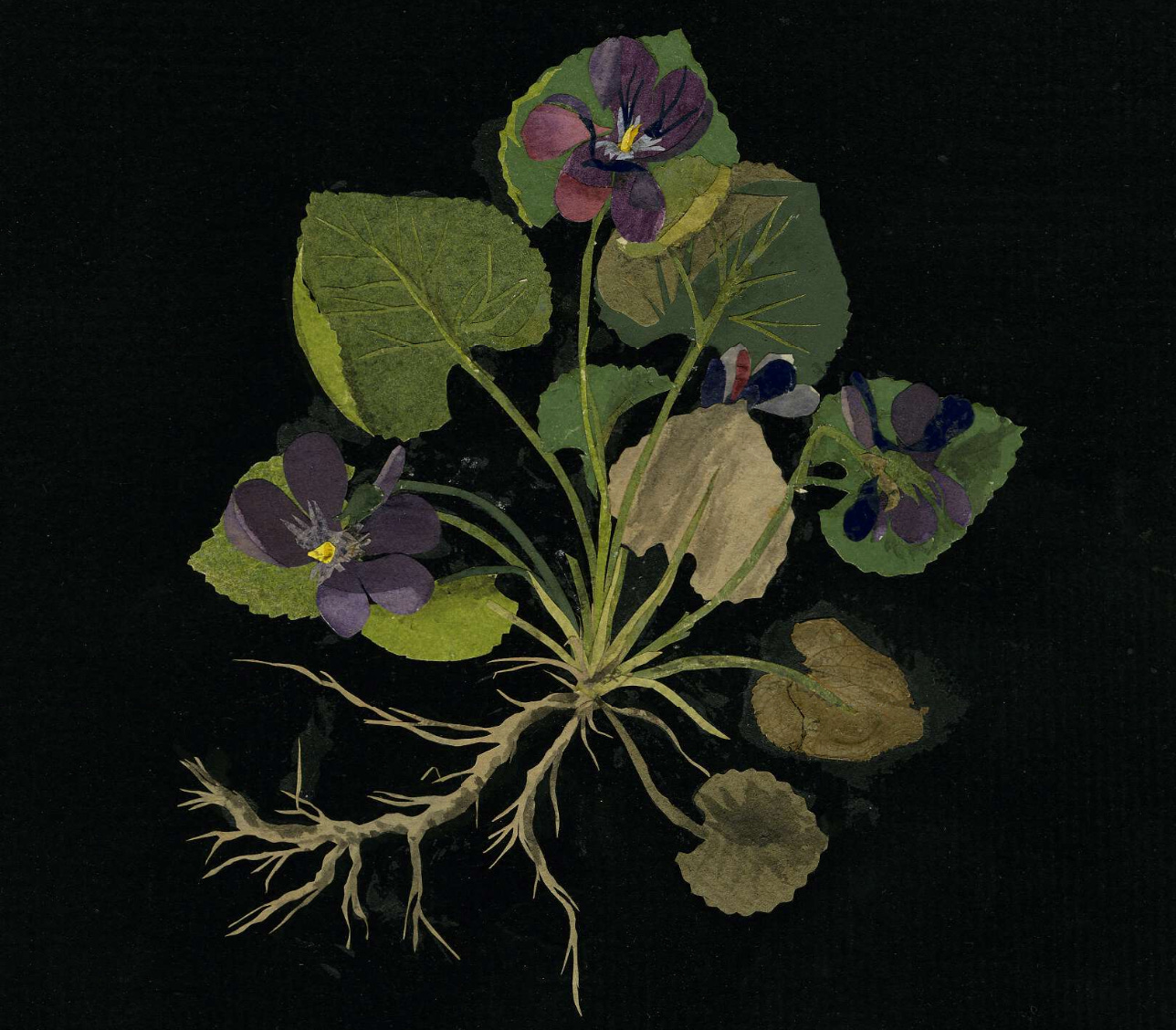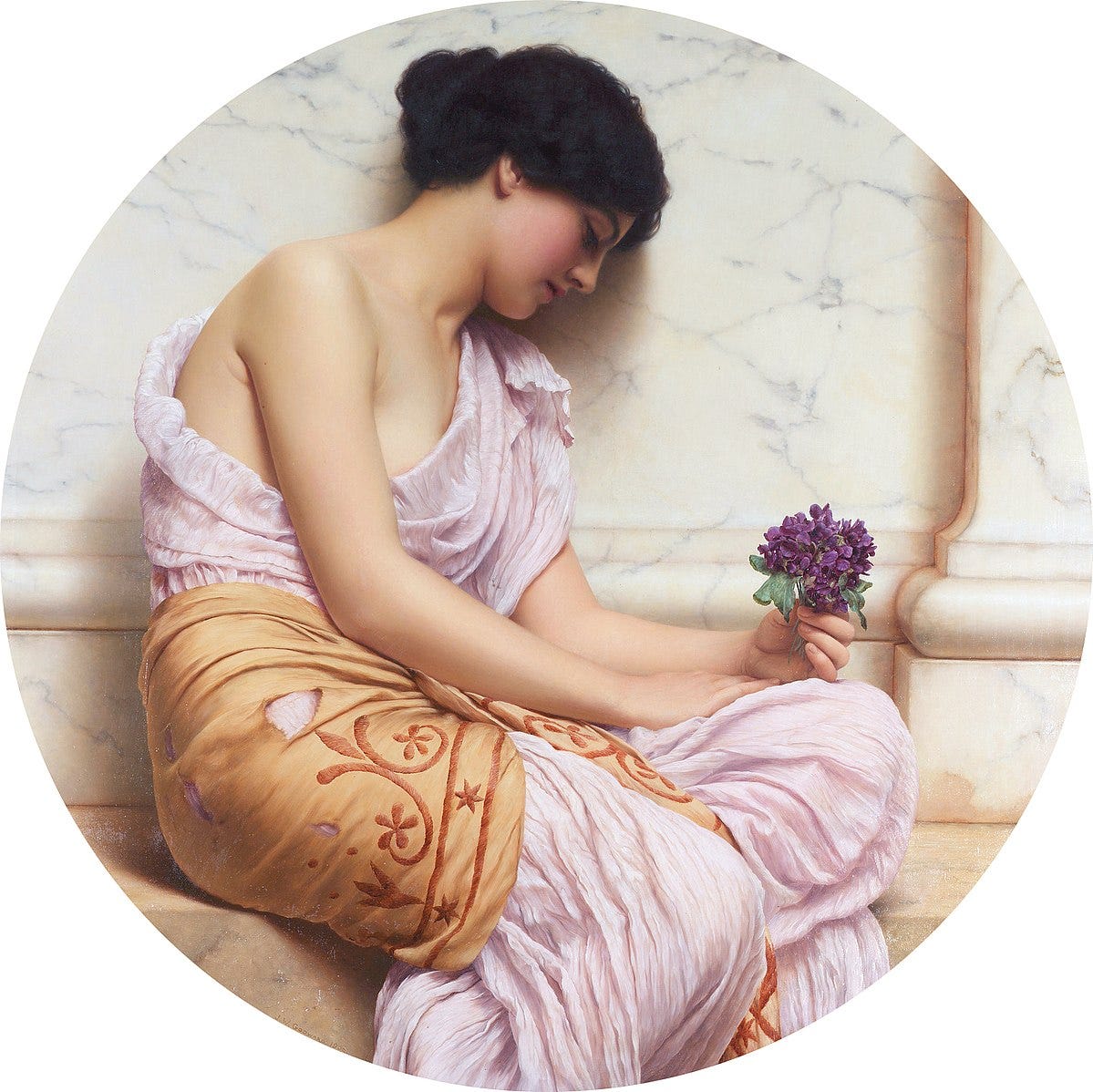Sex & Violets
Scandal, sedition, a hide-and-seek scent, and one of the most monumental discoveries in perfume history.
If I asked you to bring me a bouquet of scented violets, what would you do? A florist would give you a blank stare. You might gather a handful of those dinky little wild violets that grow like weeds in shady yards, but then realize they have no fragrance. African violets? Same deal (actually, they aren’t even violets). Eventually you would have to admit defeat—because it’s almost impossible to find violets that smell like violets anymore. This isn’t because their scent was lost through being overbred for mass consumption (hello carnation), but because the fragrance of the real flowers was usurped by the ultimate olfactive deepfake: perfume.
Viola odorata, the first known scented violets, were grown in specialist nurseries in Greece as far back as 400 BC. Named after Io, a priestess who was unluckily turned into a cow by Jupiter, they were the official flower of Athens, woven into garlands (orators began their speeches, “Athenians crowned with violets”), and scattered on floors to freshen rooms like a proto-Febreeze. Their purple petals were brewed into love potions and fashioned into amulets, and lady-fancying Lesbos dweller Sappho regularly name-checked them in her verse (“the one with violets in her lap mostly goes astray…”). The Greeks, famously, had a knack for foreshadowing.
Keep reading with a 7-day free trial
Subscribe to The Pomander to keep reading this post and get 7 days of free access to the full post archives.






